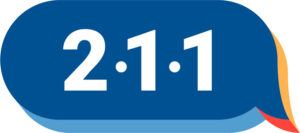What are the most pressing needs in your community?
Find out with 2-1-1 Counts
Each year, 16 million people in the United States dial 2-1-1 for help with basic needs like food and shelter or emergency services. 2-1-1 Counts is the first tool to provide real-time, searchable and visual presentations of data from 2-1-1 call centers across the nation. Using 2-1-1 Counts, you’ll find a snapshot of community-specific needs displayed by ZIP code, region or call center as recently as yesterday, enabling you to easily check trends, make comparisons and share information. 2-1-1 Counts works with your local 2-1-1 to share this information with community leaders and service agencies.
2-1-1 Counts was created by the Health Communication Research Laboratory at Washington University in St. Louis. It is currently being developed, supported and distributed by Health Communication Impact, LLC, also based in St. Louis.
Launched in 2014 in Florida and North Carolina with the help of a grant from the William R. Kenan Jr. Charitable Trust, 2-1-1 Counts has expanded across the U.S. Our dashboards have been used to write grants, create up-to-date reports and show evidence of community need. While 2-1-1 Counts includes 2-1-1 systems as its users, our primary audiences include government representatives, service agencies and philanthropies. To view Alabama’s data, click here.
How is the data collected?
Across the U.S., 2-1-1 call centers handle millions of calls every year. Call centers provide aggregated data about the calls to 2-1-1 Counts, which systematically tracks and summarizes callers’ needs.
What does “Total Calls” mean?
“Total Calls” and “Total Service Requests,” displayed across the top of the page, reflects all calls and service requests to the call center during the selected time range and for the selected geographical area. One caller may request more than one service.
Does 2-1-1 Counts track all of those calls?
2-1-1 Counts offers data about the top requests — the most important basic needs of callers, such as food, shelter and clothing. 2-1-1 Counts displays most of the remaining requests in additional categories or in “Other”.
Can I get more specific data?
Yes. Clicking on a category enables the user to view categories , and their percentage or total count of calls within the category.
Can I display the data by location?
Yes. Data from each call center can be shown by ZIP Code, County, Congressional district, state House district, state Senate district and region. The location you select at the top of the dashboard will be displayed on the map below. Click on “all” to display all of those locations within one grouping (e.g., counties) on the map; hover over each location for the data.
How are the locations and their data determined?
U.S. Census maps are used for all locations except “region.” A region is a group of ZIP codes served by a call center; some call centers serve more than one region. Request data are collected for each Census ZIP code (which may differ from the U.S. Postal Service ZIP code). The data for each ZIP code are assigned to each of the locations on the dashboard. To avoid duplication, call data from each ZIP code is displayed in only one location in each grouping (e.g., a Congressional district) A ZIP code that spans more than one location area is assigned to the one that includes that ZIP code’s geographic center.
What do the colors on the map indicate?
The rate of a particular type of call is expressed per 1,000 adults living in that ZIP code, reflected on the map of data. Each ZIP code is colored to reflect a “high,” “intermediate” or “low” rate of calls compared to others in that region. When “all” regions are viewed on the map, the colors reflect the comparative call rates for all regions of a call center.
Is other community information displayed?
Yes. U.S. Census data on population, poverty, unemployment, rental housing and education can be viewed.
How far back does the data go?
It varies by call center. Data from some centers is available as early as 2013. Use the custom date field to display that data.
Are there ways to learn more about how to use 2-1-1 Counts?
Yes. We have developed a series of video tutorials that are available at youtube.211counts.org or by clicking the red arrow at the bottom of the dashboard.
I love your site! How can I share it?
Links to social media and other ways to share the date are displayed in a column on the left side of the dashboard.
Why is the category count different than the total of its subcategory count?
Coding procedures differ between call centers. Some centers may code a request broadly, such as “utilities,” while other centers may code a similar request more specifically, such as “electric”. “Electric” will fit within one of the 2-1-1 Counts subcategories while ‘utilities’ will not.
(Click On The Link Below-It Will Open In A New Window)
211 Counts Alabama al.211counts.org

